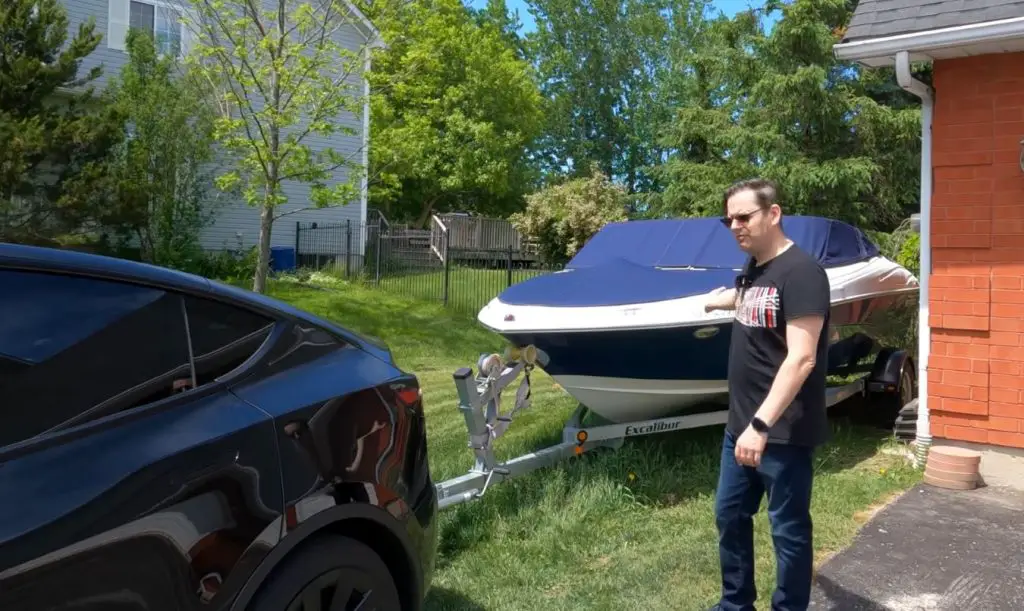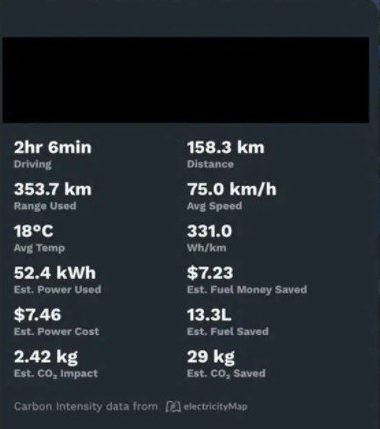The automobile industry is fast undergoing electrification. A number of countries have already started announcing timelines for banning the sale of combustion vehicles. There are also government incentives in place for promoting the sale of electric vehicles. But the adoption of electric mobility is going to anything but straightforward. The common public uses personal vehicles for a number of things depending on the type of vehicle they own, from camping to long-distance road trips. This may include the use of pickup trucks to transport large amounts of cargo, to towing trailers behind their car.

How Does Tesla Perform While Towing a 3000-Pound Boat?
With range being the most important factor in buying electric vehicles, people who regularly tow trailers are skeptical about switching to electric mobility. The added weight can severely affect the range. With charging times for electric vehicles still not comparable with fueling times for combustion vehicles, a reduced range can put a spanner in the works of your trip.
So How Does a Model Y Perform while Towing 3000 Pounds?
Youtuber ‘Tesla Canuck’ hooked up a 3000-pound (1361 kg) boat and trailer to his Model Y. He was making a trip to the lake, requiring him to drive for 98 miles (158 km). Now, the maximum prescribed towing capacity for the Model Y is 3500 pounds (1587.5 kg). He started the trip with 98 percent battery remaining and had the air conditioning switched on for the entire trip.
Hooking up a trailer to Model Y’s hitch is exactly the same as with any other combustion vehicle. When the trailer’s seven-pin adapter is plugged into the Model Y, it automatically goes into Trailer mode.

Tesla Canuck explained that his efficiency for the trip was around 45 percent. This meant that he lost a little over half his range towing the 3000-pound boat. As you can see in the image above, the vehicle covered a total distance of 158.3 km (98 miles). But the total range lost was equivalent to 353.7 km (220 miles), thus giving 45 percent efficiency. He arrived at his destination with 29 percent SoC (state of charge) of the battery left. Thus, the 98-mile trip took up around 69 percent of his battery.
Comparing an Electric Vehicle with a Combustion Vehicle for Towing
Before moving on to the numbers, let’s look at the driving experience. There are some advantages of using an electric vehicle to tow a trailer over a combustion vehicle. The trailer that he was towing along had no brakes of its own. This meant that the car was taking all the braking loads, and this worked miraculously for the regenerative braking system. This helped improve the efficiency, and also allowed for one-pedal driving.
The other advantage is the instant torque that electric vehicles offer. The instant torque gives the driver more confidence while hauling a big load along. Finally, the low center of gravity that most electric vehicles have works very well for towing. It ensures that the trailer sways a lot lesser.
As to which driver-assist systems work, Tesla doesn’t allow Autopilot or Autosteer (following lane discipline) when the vehicle is in Trailer mode. Traffic-aware cruise control, on the other hand, does work. However, Tesla Canuck says that using cruise control can hamper your efficiency. This is because we can easily monitor our speeds according to conditions such as driving up or down a slope in order to harvest the momentum.
How Much Money do you Save using an Electric Vehicle for towing?
The trip data shows that Tesla Canuck used around 52.4 kWh of energy during the trip. For a 98-mile (158.3 km) trip, that is an efficiency figure of 331 Wh/km. Now, this may also vary because of the ambient temperature. He said that the average ambient temperature that day was 18°C, which is on the lower side. Had it been 25°C, he would have gotten better efficiency.
At $0.14 per kWh of energy cost, the trip cost him $7.46 for the entire trip. According to his calculations, he ended up saving around 13.3 liters (3.51 gallons) of fuel. So, he ended up saving around $7.23 of fuel money. So the cost of driving is more or less similar.
Why is Towing Capacity an Important Factor for Some Electric Vehicles?
People may not care about the towing capacity of small electric cars or premium sedans. However, when it comes to crossovers, SUVs, and pickup trucks, this can be a very important factor. Historically, pickup trucks have been a huge hit in the United States. The Ford F-series has led vehicular sales charts for close to four decades now. SUVs are a close second in terms of vehicle segments.
Both these segments boast high towing capacities. In fact, Ford has released range figures for the F-150 Lightning with around 1000 pounds (453.6 kg) of weight already loaded. Thus, as and how electric vehicles start percolating into the more popular segments, the towing and payload capacities and their effect on the driving range are going to affect sales. Companies now have to work on improving battery efficiency when the car is dragging along high loads.



















So an equivalent ICE truck can manage 30mpg towing the trailer? Meaning that it can do 60mpg without?